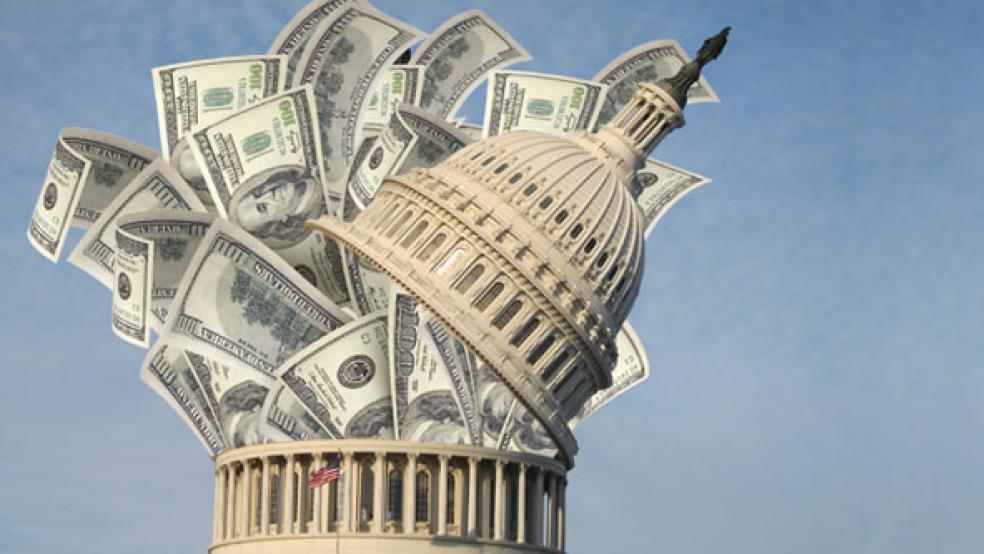As political candidates race to get last-minute votes this Super Tuesday, they're turning to TV to gain widespread support. Cable networks may be the biggest beneficiaries.
Political candidates spent more than $16.6 million on national cable commercials during the first quarter of 2016, according to industry data from cable advertising provider firm Viamedia. The figures are 365 percent higher than what was spent in the first quarter of 2012, when only $4.6 million was spent.
The increase has been seen across the board, but especially in Super Tuesday states. Spending on cable advertising in Alabama rose 2,615 percent to $379,700 in the first quarter of this year, from $14,500 in the first quarter of 2012. Spending in Georgia was up 4,200 percent, while Massachusetts increased 2,050 percent. In Tennessee, cable advertising spending rose 55,261 percent.
Related: Newt Gingrich: Wake Up, Republicans – It’s Either Trump or Clinton
Candidates are buying most of their cable ads on Fox News channels, followed by ESPN, CNN, HGTV and USA. (Like CNBC, USA is owned by Comcast's NBCUniversal.)
Borrell Associates projected political advertising costs to hit $11.4 billion in 2016 alone, more than 20 percent higher than the previous election cycle. Digital advertising is expected to just make up $1 billion of that total figure this year.
Part of the increase in advertising is because in 2012 there were fewer Republican candidates and the Democratic nomination was locked up by President Barack Obama.
Viamedia CEO Mark Lieberman said that the Democratic race between Hillary Clinton and Bernie Sanders is much closer, leading the candidates to buy more ads to ensure their party nomination. On the Republican side, the presidential hopefuls are snapping up any TV spots to stand out due to the large number of potentials.
"The power of cable television is absolutely stronger than ever given the fact that you have a number of candidates trying to break through the clutter, given the number of free airtime one candidate is given on the Republican side, Donald Trump," Lieberman said.
Lieberman also said cable advertising allows candidates to target specific areas better. For example, he explained candidates vying for New Hampshire votes would have to buy a broadcast ad in the metro Boston area to get their commercial shown in some areas of New Hampshire, rendering that ad useless to the people who see it living in Massachusetts. However, cable networks allow candidates to buy ads just within the geographic confines of New Hampshire or even specific cities.
Related: Bernie Sanders’ Free College Tuition Boondoggle
"As budgets continue to get tight, obviously now every dollar has to be really focused carefully in how you're spending it, which means you're going to have to target your dollars. There is no spray and pray for votes," he said.
Lieberman is expecting advertising demand to stay elevated well through March and April. Viamedia has even began brokering candidate deals in June, right now pegged to any last-minute campaigning that needs to be done before the Republican National Convention in July.
There could be another reason TV spending has increased so much, said Mark Egan, chief client officer for media planning and buying agency Maxus Americas. Because there is a battle just to win the party nomination, candidates are focused on appealing to the mass voters instead of honing down on very specific groups. Egan said the easiest way to reach people at scale at once is still to buy a television ad.
A recent Strata survey of political ad agencies showed that 88 percent found TV the most commonly used ad platform, and 78 percent of them said it still provided the best return on investment.
"Television ads are mostly a blunt instrument," Egan said. "We're still at the stage of the election where it is very much an emotional sell, and candidates are thinking like a brand. They are still trying to make their case on their brand and familiarize voters with who they are."
Egan expects that after the party nominations are set, campaigns will start shifting more money towards digital. Digital ads allow for even more specific targeting and complex campaigning, meaning candidates could reach out to swing voters on specific issues they care about instead of just introducing themselves broadly.
"The big question is can they take it to the next level, and if they are, are they going to court the millennials of the world? If so, they've got to take it to the depth of social media… Sixteen percent of millennials have dropped out of linear television," he said, referring to the term for watching TV when it airs.




